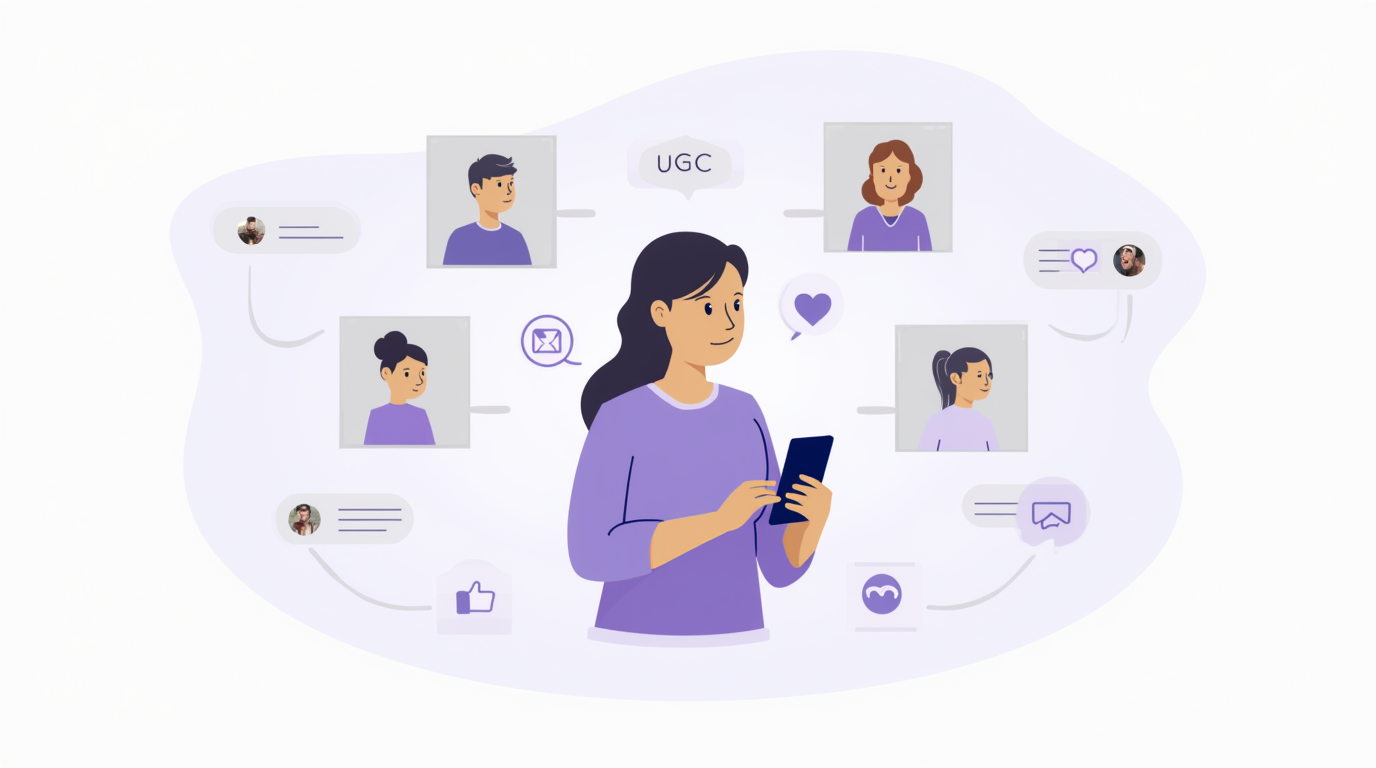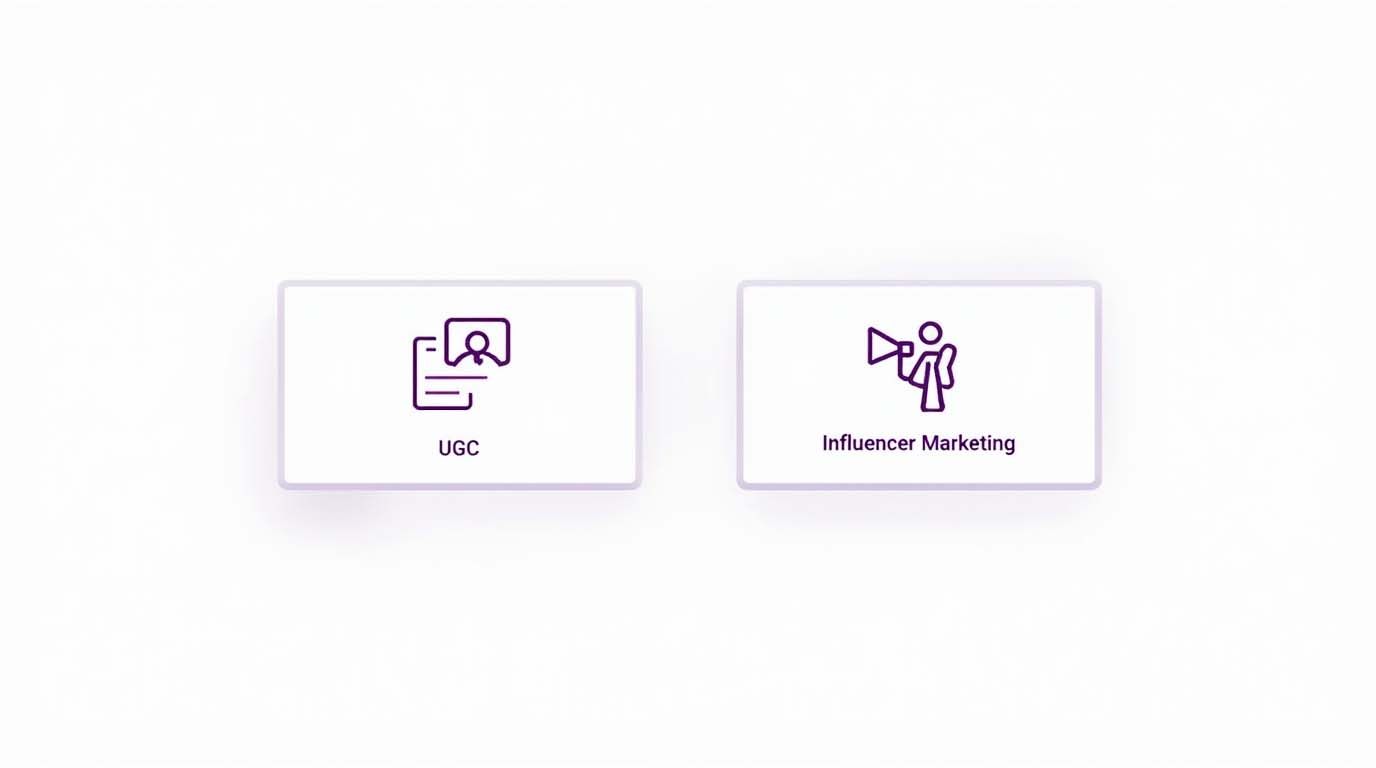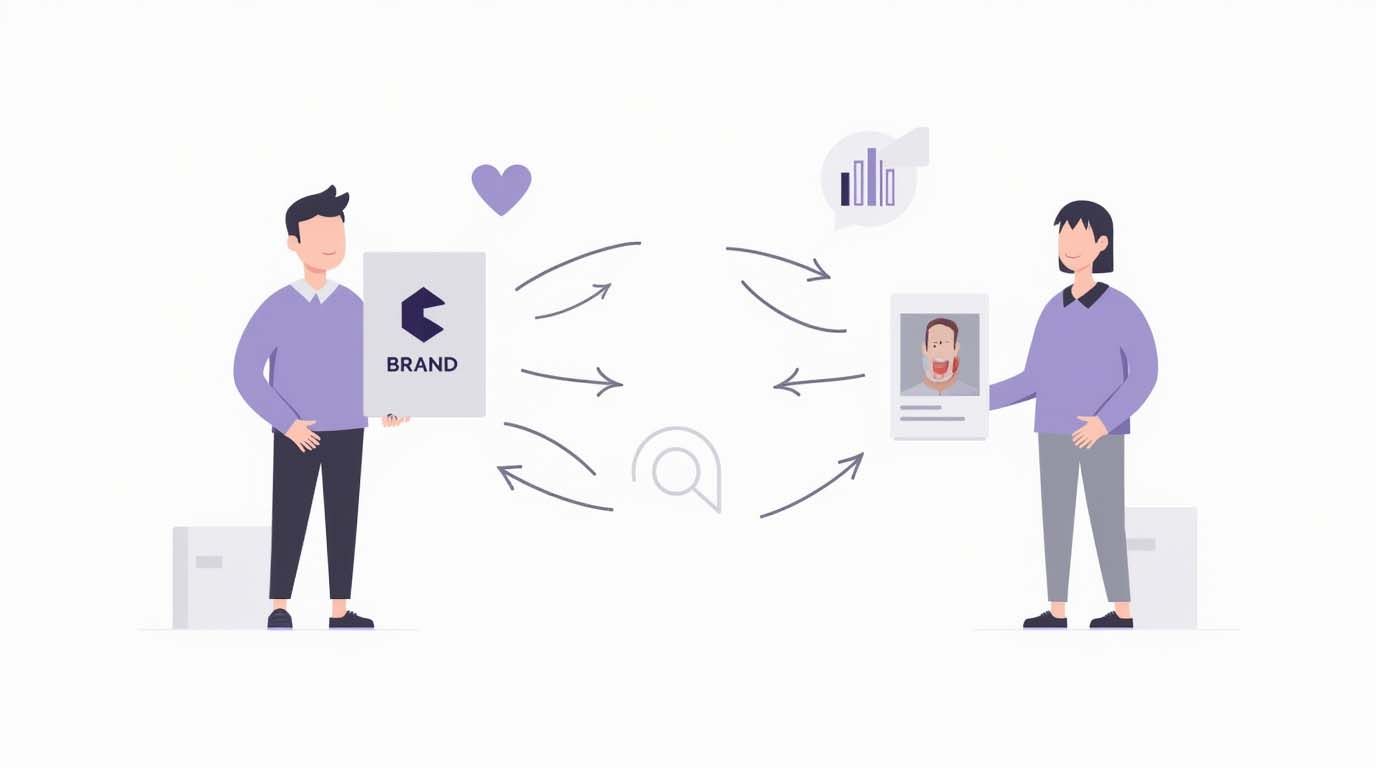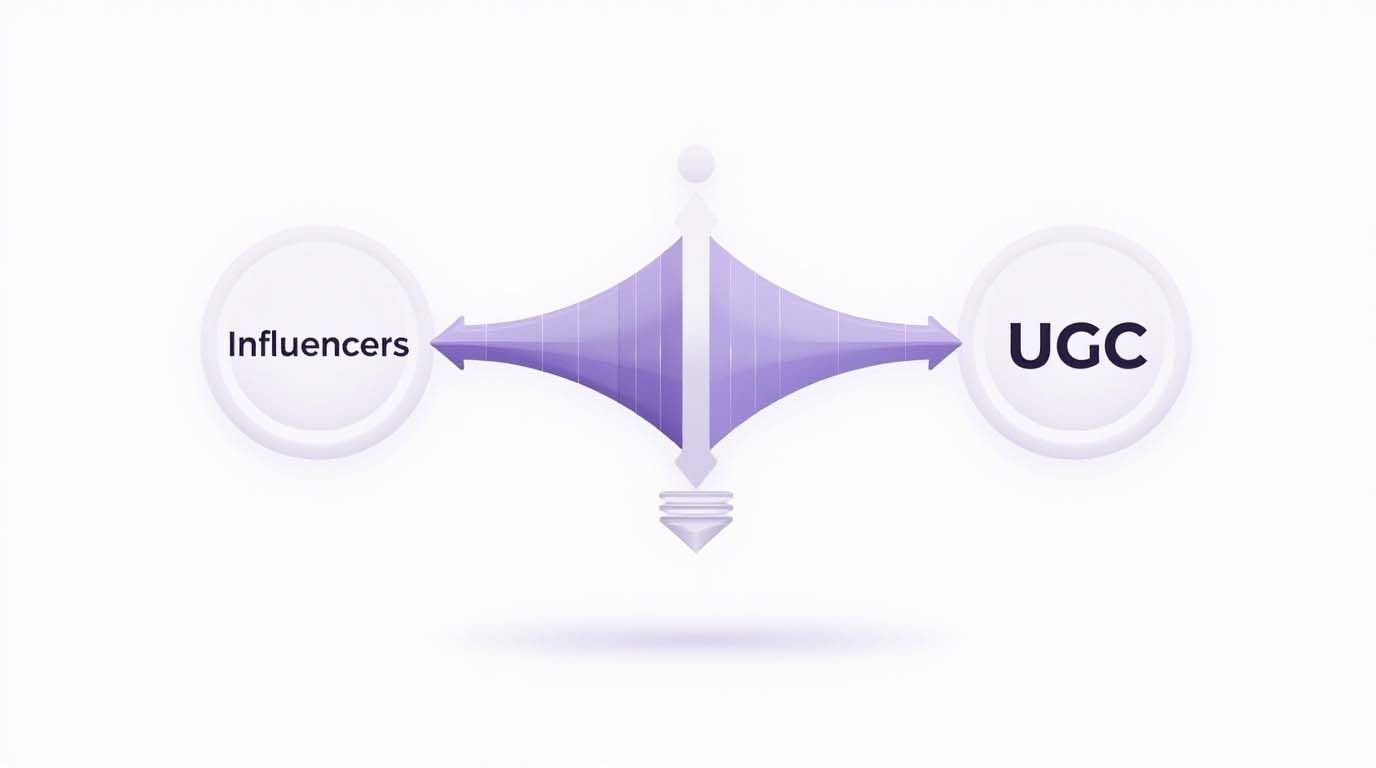
In a digital landscape driven by authenticity, brands are shifting focus toward content that feels real, relatable, and unscripted. That’s where user-generated content (UGC) enters the picture.
UGC might be the missing link if you’ve ever wondered why some influencer campaigns feel more like genuine recommendations than paid promotions. Understanding how it works could be the key to scaling trust, reach, and conversion without inflating budgets.
What is UGC?
In influencer marketing, user-generated content (UGC) refers to original material created by consumers or niche influencers showcasing a brand, product, or service. Unlike studio-produced campaigns, this content is typically informal and rooted in authentic personal experience.
Formats include Instagram posts, TikTok clips, YouTube reviews, or Stories where individuals offer genuine feedback. Although not professionally crafted, UGC delivers strong social proof by amplifying real voices. Creators often include dedicated customers or micro-influencers with a strong connection to the product.
Types of UGC Content by Influencers
Influencers often generate UGC that blurs the line between personal use and subtle promotion. Common formats include:
-
Unboxing videos – Capture the initial impression and excitement of product delivery.
-
Tutorials or how-tos – Demonstrate usability or effectiveness in a relatable context.
-
Product reviews – Share honest opinions based on real-world usage.
-
Lifestyle integrations – Seamlessly incorporate products into daily routines, offering viewers situational relevance.

These formats tend to drive high engagement due to their relatable tone and perceived sincerity.
UGC vs Traditional Influencer Content
Traditional influencer content is typically pre-arranged, highly curated, and closely aligned with a brand's creative brief. It may include professional photoshoots, rehearsed messaging, and structured storytelling.
In contrast, UGC feels more spontaneous and less filtered — which is exactly why audiences trust it more. Instead of overt promotion, it shows how products integrate naturally into daily life, often outside of formal partnerships.
UGC vs influencer marketing

Although UGC and influencer marketing often overlap, they differ in execution, tone, and strategic purpose.
-
Tone & Origin: UGC emerges from consumers or micro-influencers sharing authentic experiences, while influencer marketing involves pre-negotiated content aligned with brand messaging.
-
Credibility: Because UGC is typically unpaid and unsolicited, it may appear more genuine to audiences, enhancing trust.
-
Cost: Brands often repurpose UGC at low or no cost, making it an efficient tool for ongoing engagement. In contrast, influencer collaborations come with negotiated fees, usage rights, and deliverable expectations.
Ownership and Authenticity in UGC Content
One defining feature of UGC is that creators — not brands — usually retain ownership of the content. This autonomy contributes to higher perceived authenticity.
Audiences tend to trust content that hasn’t been filtered through brand control, and that authenticity often translates into better engagement metrics. According to Stackla, 79% of consumers say UGC highly impacts their purchasing decisions, outperforming branded content.
Marketing Control in UGC vs Influencer Campaigns
Influencer campaigns give brands greater control over messaging, visuals, and timelines. Creative briefs, approval workflows, and contractual obligations ensure alignment with brand goals.
UGC, however, offers limited control. Marketers can request permission to share or repurpose it, but they rarely dictate the tone or format. While this might sound risky, the organic nature of UGC often enhances credibility and engagement, especially among Gen Z and millennial audiences.
Visual Style and Production Value
User-generated visuals typically feature lower production value: handheld shots, ambient lighting, and unpolished edits. But don’t underestimate their impact. Audiences often interpret this rawness as proof of honesty.
Influencer-created content, especially from mid-tier or macro-level creators, is often professionally styled. Brands can expect high-resolution images, branded backdrops, and editing consistency — which serves different goals, like launching a new product or reinforcing brand identity.
UGC Marketing Benefits for Brands and Influencers
Marketers increasingly prioritize content that builds trust, drives interaction, and converts authentically — and UGC delivers on all fronts. For both brands and influencers, user-generated content offers a strategic edge that goes beyond aesthetics. It resonates because it reflects genuine user experiences.

When integrated into influencer marketing, UGC strengthens consumer-brand relationships, amplifies visibility across platforms, and supports scalable, cost-efficient campaigns.
Influencer UGC as a Trust Driver
Content created by influencers through real-life product usage tends to outperform polished ads in terms of trust. Audiences value the relatability and spontaneity of UGC because it mirrors authentic consumer behavior.
📌 Nielsen reports that 92% of people trust recommendations from individuals — even strangers — over branded messaging. Influencer UGC taps into this behavioral pattern, offering social proof that feels honest and experience-based.
UGC in Marketing Funnels
UGC holds strategic value across every stage of the marketing funnel:
-
Awareness: UGC on high-visibility platforms sparks interest without overt selling. Think TikTok reactions or Instagram Stories showcasing first impressions.
-
Consideration: Product comparisons, tutorials, and in-depth reviews help potential buyers evaluate fit and performance.
-
Conversion: Seeing peers or influencers use a product successfully encourages last-mile confidence. Visual testimonials can be embedded on landing pages to reduce friction and improve conversion rates.
Performance Metrics for UGC Campaigns
To track the impact of influencer UGC, brands monitor:
-
Engagement rates (likes, comments, shares) as a proxy for relevance
-
Click-through rate (CTR) to evaluate traffic generation
-
Conversions and assisted conversions to assess ROI
-
Average time on page and bounce rate when UGC is featured on-site
-
Saves and shares as indicators of value-driven content
Benchmarking against traditional branded content can reveal UGC’s superior performance in fostering audience interaction and lowering acquisition costs.
How Content From Influencers Powers UGC Marketing
Influencers are not just content creators — they’re catalysts. Their reach, trust equity, and storytelling ability make them ideal for initiating UGC flows. Once influencers post relatable content, followers are often inspired to contribute their own, extending campaign momentum organically.

🎯 Whether launching a new product or reviving interest in an existing line, influencer-backed UGC can compound engagement while reducing the need for high ad spend.
Influencer-Generated UGC Campaign Models
Brands often use influencers to launch community-driven UGC initiatives. Popular models include:
-
Hashtag challenges (especially on TikTok), where influencers start trends that audiences replicate
-
Giveaways where user entries involve sharing branded content
-
Photo/video contests, encouraging creativity while expanding reach
-
Testimonial calls, where influencers invite their followers to share experiences using a specific product
These models shift the content creation load while deepening community involvement.
Platforms Driving Influencer UGC
Certain platforms are naturally optimized for influencer-driven UGC:
-
Instagram – UGC thrives through Reels, Stories, and Highlights. Tagging features enable reposting and brand engagement.
-
TikTok – Short-form storytelling combined with viral potential makes it ideal for challenge-based content.
-
YouTube – Longer-form UGC (like reviews, hauls, and vlogs) builds credibility over time and performs well in search.
-
Emerging channels – Pinterest Idea Pins and Reddit AMA threads are starting to capture more UGC momentum, especially in niche communities.
Case Studies of UGC Content by Influencers
-
Glossier (Beauty): Built an entire brand aesthetic around UGC. Influencers shared “shelfies” and routines, which the company reused across social and product pages.
-
HelloFresh (Food): Encouraged unboxing and recipe walkthroughs from influencers, then repurposed the most engaging content as ad creatives and Stories.
-
Canva (SaaS): Partnered with creators who showcased design tutorials and quick hacks, leading to a surge in organic UGC from freelancers and small businesses.
-
ASOS (Retail): Launched a TikTok campaign with micro-influencers showcasing #AsSeenOnMe outfits, resulting in over 4 billion impressions from user submissions.
Challenges With UGC in Influencer Marketing

Despite its high-impact potential, user-generated content comes with operational and legal complexities — especially when sourced through influencer partnerships. From legal ambiguity to inconsistent branding, brands must balance creative freedom with strategic oversight to make UGC scalable and effective.
Understanding the limits and risks is essential for anyone investing in UGC as a core content or marketing channel.
Rights and Legal Use of UGC Content
One of the most common pitfalls in UGC campaigns is assuming unrestricted usage rights. Just because content is shared publicly doesn’t mean brands can repurpose it. 🛑 Influencers retain copyright unless a usage agreement is in place. Repurposing UGC — for paid media, email marketing, or landing pages — often requires:
-
Written permission or licensing agreements
-
Clear attribution guidelines
-
Platform-specific compliance (especially on YouTube and Instagram)
Failing to address these upfront can result in content takedowns, reputation damage, or even legal claims.
Consistency and Quality Control Issues
Unlike traditional influencer campaigns with defined creative briefs, UGC often lacks uniformity in tone, message, or visual quality. This inconsistency can dilute brand perception, especially across omnichannel campaigns.
Brands face challenges such as:
-
Varied production standards
-
Off-brand language or imagery
-
Mismatched audience expectations
While spontaneity boosts relatability, it may conflict with curated brand identities — particularly in luxury, finance, or B2B sectors.
Incentives and Authenticity Balance
Compensating influencers to generate UGC introduces a delicate tension. On one hand, incentivization motivates participation; on the other, over-scripting or excessive rewards may erode trust.
Audiences are increasingly adept at spotting overly promotional posts. To maintain authenticity, many brands now adopt hybrid models that combine:
-
Modest incentives (e.g. free products, exclusive access)
-
Full creative freedom
-
Disclosure transparency in line with FTC guidelines
Carefully balancing these elements can preserve credibility while still driving measurable outcomes.
Combining Influencer Content and UGC in Marketing Strategy
A robust digital strategy doesn't treat UGC and influencer marketing as either/or — instead, it integrates both. The strongest campaigns deploy them strategically based on funnel stage, platform, and campaign goals.

This dual-track approach blends the trust of peer-generated content with the polish and reach of professional creators.
Situations Where UGC Performs Better
UGC tends to outperform traditional influencer content when the goal is relatability, volume, and peer validation. Effective use cases include:
-
Product discovery – UGC in TikTok challenges introduces products without heavy branding.
-
Social proof for eCommerce – Photos and reviews on product pages often drive more conversions than ad banners.
-
Retention campaigns – Real stories from customers promote deeper emotional connection.
📌 A Nielsen study found that UGC drives 29% higher web conversions than campaigns that lack it — particularly in B2C sectors like fashion, wellness, and travel.
When Influencer Marketing Outperforms UGC
Certain campaigns call for a controlled message, consistent production quality, or aspirational appeal — areas where full influencer marketing excels. Examples include:
-
Product launches requiring visual precision and pre-launch confidentiality
-
Brand repositioning that depends on carefully framed storytelling
-
High-ticket B2B or luxury items, where polished aesthetics are non-negotiable
-
Endorsements by authority figures or celebrities, where brand trust is borrowed
In such contexts, the curated nature of influencer collaborations ensures alignment across touchpoints.
Hybrid UGC-Influencer Campaigns
Many brands now design campaigns that combine both influencer-driven and audience-generated content. Popular hybrid strategies include:
- Influencer-led UGC seeding: Influencers launch content, then prompt followers to respond, share, or replicate.
- Layered storytelling: Influencers create polished content while UGC fills in behind-the-scenes or real-life application gaps.
- Campaign continuity: Brands start with influencer posts to introduce the message, then sustain engagement with UGC.
📌 For example, Adidas has used this format successfully — macro influencers kick off content drops, while fans fuel the conversation through Stories, duets, and photos.
Future of Influencer UGC Content in Marketing
As marketing budgets tighten and audience expectations shift toward transparency, UGC is becoming a long-term strategic asset — not just a trend. With smarter tools and more creators entering the ecosystem, influencer-driven UGC is evolving into a scalable, performance-driven pillar of digital marketing.

Forward-looking brands are already blending AI, micro-influencers, and paid media to transform grassroots content into high-converting campaigns.
AI Tools for Influencer UGC
Advanced platforms now assist in identifying high-performing UGC, managing rights, and repurposing content at scale. These tools can:
-
Detect top-performing influencer posts through engagement analytics
-
Auto-tag visuals for brand compliance
-
Generate variant creatives (resized or reformatted) for different platforms
-
Support licensing workflows and legal compliance
📌 Tools like Lumanu, Stackla, and Dash Hudson are commonly used to streamline content sourcing and automate repurposing, reducing manual workload and boosting speed to market.
Rise of Niche Micro-Creators in UGC Campaigns
Micro-influencers — typically with 1K–100K followers — now dominate many UGC-driven campaigns. Their audiences are smaller but more loyal, making their content feel authentic and community-rooted.
📌 According to CreatorIQ, micro-creators deliver up to 60% higher engagement rates than larger influencers. UGC from these voices is perceived as relatable, making it ideal for lifestyle, health, and direct-to-consumer brands.
UGC Content in Paid Ad Strategies
One of the fastest-growing applications of UGC is in performance advertising. Brands are embedding influencer-generated videos, testimonials, and product demos into:
-
Meta and TikTok ad creatives
-
Google Display Network visuals
-
Retargeting campaigns on Instagram and YouTube
Frequently Asked Questions (FAQ) on User-Generated Content (UGC)
Do UGC Creators Make Money?
Yes, creators of user-generated content (UGC) can earn income through collaborations with brands seeking authentic promotional materials. Earnings vary based on factors such as content quality, niche, and experience. Part-time UGC creators may earn between $1,000 to $3,000 per month, while full-time creators can earn $5,000 or more.
What Is an Example of UGC?
User-generated content encompasses various forms of media created by individuals rather than brands. Examples include customer reviews, social media posts featuring products, blog entries, images, videos, and podcasts. For instance, a customer sharing a photo on Instagram using a brand's product is a typical example of UGC.
How to Create UGC Content?
To create user-generated content:
-
Select a Niche: Focus on an area of interest or expertise
-
Develop Content Creation Skills: Learn to produce high-quality photos, videos, or written content.
-
Build a Portfolio: Compile examples of your work to showcase to potential clients.
-
Engage with Brands: Reach out to companies that align with your niche to offer your content creation services.
-
Utilize UGC Platforms: Join platforms that connect creators with brands seeking UGC.
How Many Followers Do You Need for UGC?
A substantial follower count is not a prerequisite for becoming a UGC creator. Brands often prioritize content quality and authenticity over audience size. Some creators have successfully collaborated with brands without a significant following.
How to Start UGC for Free?
To commence creating UGC without financial investment:
-
Utilize Free Tools: Employ free applications and software for content creation and editing.
-
Leverage Social Media Platforms: Use existing social media accounts to produce and share content.
-
Access Educational Resources: Take advantage of free online tutorials and courses to enhance your skills.
-
Network: Connect with other creators and participate in online communities for support and opportunities.
How Much Does It Cost to Make UGC?
The cost of producing user-generated content can vary. Many creators start with minimal to no investment by using smartphones and free editing tools. As one advances, investing in higher-quality equipment and software may enhance content quality. However, initial costs can be kept low, making UGC creation accessible to many.
17.04.2025
79 article view
Similar articles
29.08.2025
Multi-Platform Influencer Strategies: Maximizing Reach Across All Channels
The digital marketing landscape has transformed dramatically, with influencer marketing emerging as a...
30.05.2025
How to Create An AI Influencer For Free for Instagram
The industry is evolving rapidly, shaped by the growing influence of AI technology. Among the most compelling...
18.04.2025
How to Start Your Own Influencer Marketing Agency
Launching an influencer marketing agency means entering one of the fastest-growing sectors in digital...